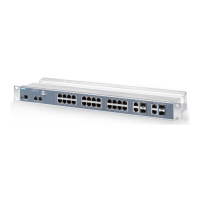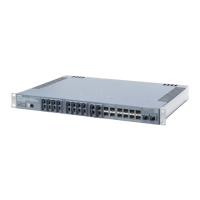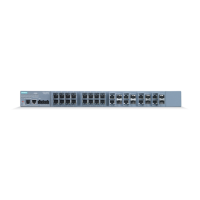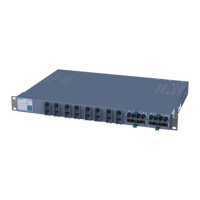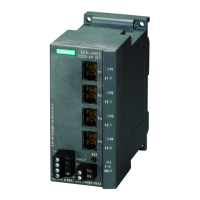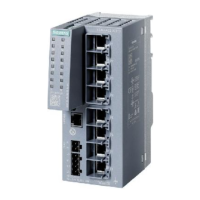monitor session <session-id(1-1)> source
{interface {<interface-type> <interface-id> | port-channel <port-
channel-id (1-8)>} [{rx|tx|both}]}
The parameters have the following meaning:
Parameter Description Range of values / note
session-id Number of the session 1
interface Keyword for a an interface description -
interface-type Type or speed of the interface Enter a valid interface.
interface-id Module no. and port no. of the interface
port-channel Keyword for a port channel connection -
port-channel-id Number of the addressed port channel 1 ... 8
rx Received data traffic will be mirrored
(received)
If you enable the mirroring function
for a ring port, the ring port sends
test frames even in the "link down"
status.
tx Transmitted data traffic will be mirrored
(transmitted)
both Received and transmitted data traffic
will be mirrored
For information on names of addresses and interfaces, refer to the section "Addresses and
interface names (Page 36)".
If you do not select any parameters from the parameter list, the default value (both) is used.
Result
As soon as you have configured the settings for the port to be monitored and the destination
port, the session is complete and active.
Further notes
You delete the source for mirroring a port with the no monitor session ... source
command.
You end and delete a session with the no monitor session command.
You display the configuration settings with the show monitor session command.
See also
Features not supported (Page 30)
12.5.2.8 no monitor session source
Description
With this command, you delete the source for mirroring a port or a VLAN.
Diagnostics
12.5 Port Mirroring
SCALANCE XB-200/XC-200/XF-200BA/XP-200/XR-300WG Command Line Interface
Configuration Manual, 07/2017, C79000-G8976-C361-06 595
